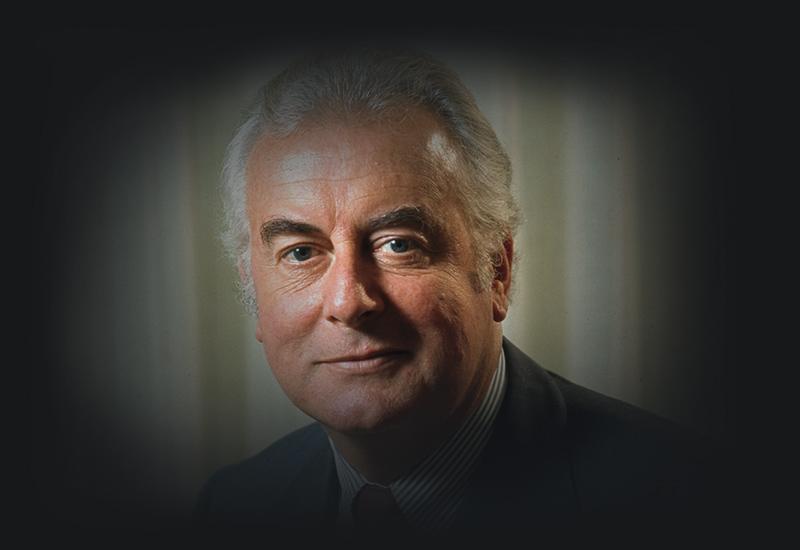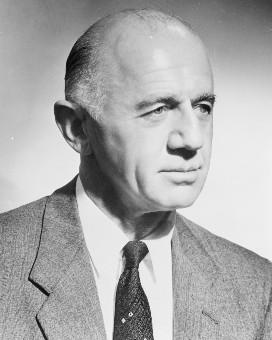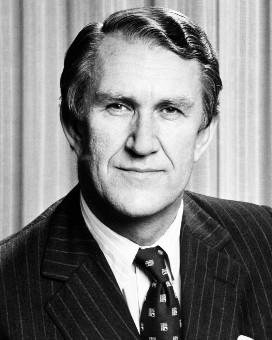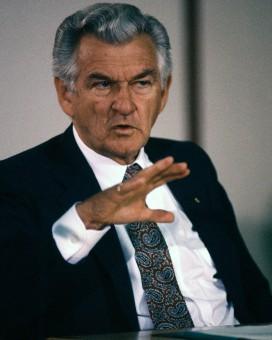Edward Gough Whitlam led the Australian Labor Party to victory at 2 elections: 1972 and the double dissolution election of 1974.
Whitlam contested 12 federal elections as the Australian Labor Party Member for Werriwa between 1952 and 1977, with Labor losing to the Coalition governments of Robert Menzies 6 times, Harold Holt once, John Gorton once and Malcolm Fraser twice. Whitlam was in Opposition for 22 of the 25 years he represented the seat of Werriwa.
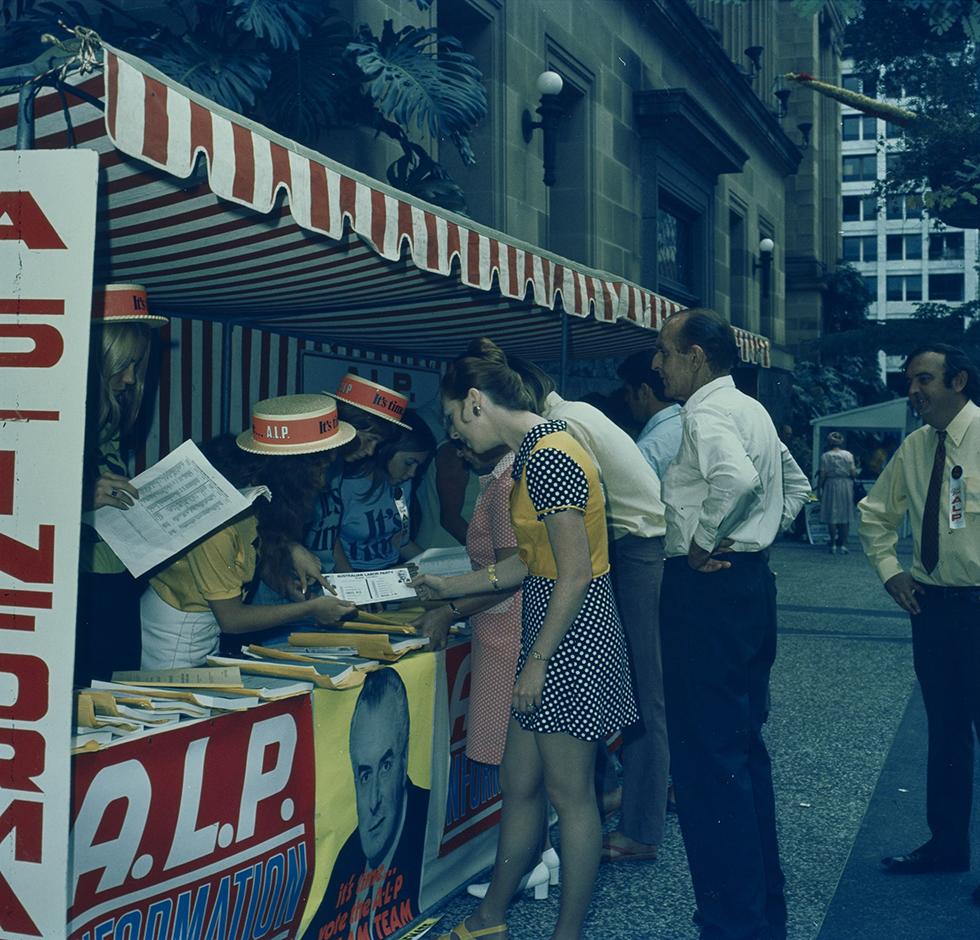
A busy Australian Labor Party booth during the election campaign, 1972. NAA: A8746, KN24/1/73/26
29 November 1952
Whitlam won the seat of Werriwa in southern Sydney in this by-election with a record majority.
29 May 1954
In the aftermath of the defection of Soviet Embassy officials Vladimir and Evdokia Petrov the month before, this House of Representatives election returned Robert Menzies’ Coalition government. The Liberal Party won 47 seats and the Country Party 17 seats. Labor won 57 seats in the House, with Whitlam retaining Werriwa.
10 December 1955
After the formation of an anti-Communist grouping split the Labor Party early in 1955, Prime Minister Robert Menzies obtained an early dissolution of parliament on the grounds of bringing together the elections for both Houses. The Coalition was returned with an increased majority, with 57 Liberal, 18 Country and 47 Labor seats in the House of Representatives. In an electoral redistribution, the Werriwa electorate was divided and the new electorate of Hughes created. Whitlam was returned for the new Werriwa seat, based on the western Sydney suburbs of Liverpool, Cabramatta and Fairfield. In the half-Senate election, of the 30 seats contested, the Coalition won 16, Labor 12, Anti-Communist Labor 1 and Country–Western Australia 1.
22 November 1958
John McEwen replaced Arthur Fadden as Leader of the Country Party and Deputy Prime Minister in March 1958. At the November federal election, the Menzies–McEwen Coalition was returned with a substantial majority. In the House of Representatives the Liberal Party won 58 seats, the Country Party 19 and Labor 45. Of the 32 Senate seats contested, however, the Coalition and Labor each won 15. The other 2 seats were won by the Democratic Labor Party and Country–Western Australia. The 1958 election campaign was the first where television was widely used by the parties.
9 December 1961
At this election the Coalition narrowly retained government, with 45 Liberal and 17 Country seats to Labor’s 60. Menzies retained government when Liberal member Jim Killen held the Queensland seat of Moreton with the help of Communist Party voters’ second preferences. The Coalition thus governed by a majority of 1 seat after a Speaker was elected in the House of Representatives. Whitlam held Werriwa and became Deputy Leader of the Opposition. Of the 31 Senate seats contested at this election, the Coalition won 15 and Labor 14, with 1 Country–Western Australia and 1 ‘other’.
30 November 1963
Menzies called this House of Representatives election early and obtained an improved majority. In the House of Representatives, 52 seats were won by the Liberal Party, 20 by the Country Party and 50 by Labor, including Whitlam’s seat of Werriwa.
26 November 1966
The Liberal Party won 61 seats, the Country Party 21 and the Labor Party 41, with 1 Independent in this House of Representatives election. Whitlam retained Werriwa.
25 October 1969
This House of Representatives election was the first for Whitlam as Leader of the Labor Party. The Gorton government was returned, but with increased dependence on its Coalition partner after suffering a loss of 17 seats. The Liberal Party won 46 seats and the Country Party 20, with Labor increasing its seats by 16 to 59, including Werriwa, held by Whitlam. The Democratic Labor Party and Australia Party contested this election without success.

Report on Labor’s 1969 policy launch, The Age, 2 October 1969 (Shedden Collection). NAA: A5954, 1477/12, p.15
2 December 1972
Campaigning on the theme, ‘It’s time’, Whitlam led the Labor Party to victory after 23 years of Liberal–Country Party government. Labor gained a majority of nine in the House of Representatives with 67 seats to the Liberal Party’s 38 and the Country Party’s 20. The Democratic Labor Party and Australia Party House of Representatives candidates were again unsuccessful.
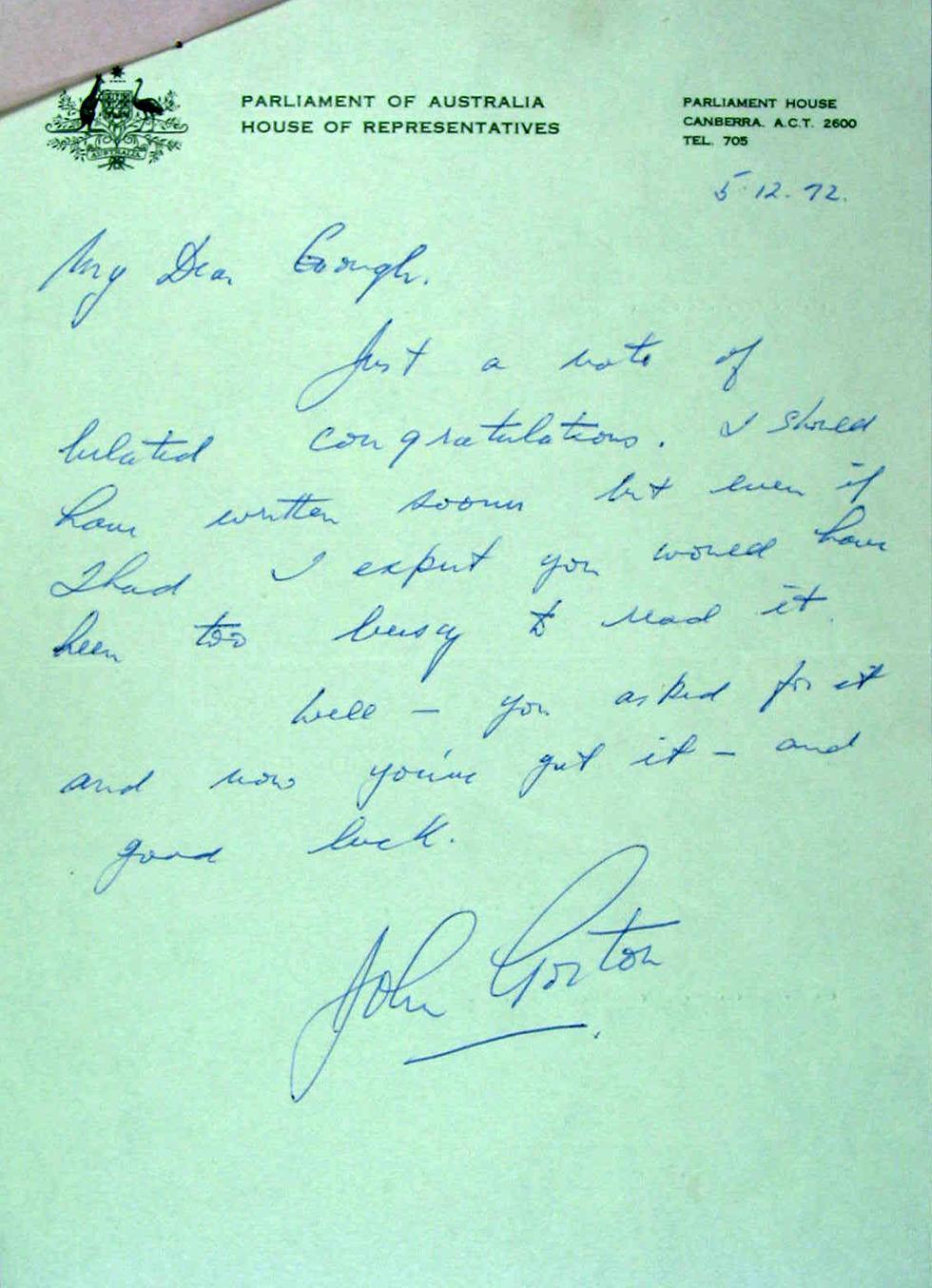
Note of congratulations from John Gorton to Gough Whitlam on winning the 1972 election. NAA: M503, 20084
In the Senate the Coalition had a majority with Labor 26, Liberal Party 21, Country Party 5, Democratic Labor Party 5 and 3 Independent senators.
18 May 1974
Prime Minister Whitlam secured a double dissolution election on the grounds of 6 Bills twice rejected by the Senate. But the new Senate was evenly balanced with the government holding 29 seats, the Liberal Party 23 and the Country Party 6. The balance of power was held by an Independent senator and one representing the Liberal Movement. In the House of Representatives the Labor Party remained in government with 66 seats, the Liberal Party 40 and the Country Party 21. After the election, the 6 Bills that had formed the basis of the double dissolution – the Commonwealth Electoral Bill (No. 2) 1973, the Senate (Representation of Territories) Bill 1973, the Representation Bill 1973, the Health Insurance Commission Bill 1973, the Health Insurance Bill 1973, and the Petroleum and Minerals Authority Bill 1973 – were passed at a historic joint sitting of both houses of parliament.
13 December 1975
Whitlam’s second double dissolution election was held after Governor-General Sir John Kerr dismissed the Whitlam government and appointed Malcolm Fraser as caretaker Prime Minister. The Fraser government was elected with a resounding majority. The Liberal Party won 68 seats to Labor’s 36, with the National Country Party (the name changed from the Country Party on 2 May 1975) winning 23 seats.
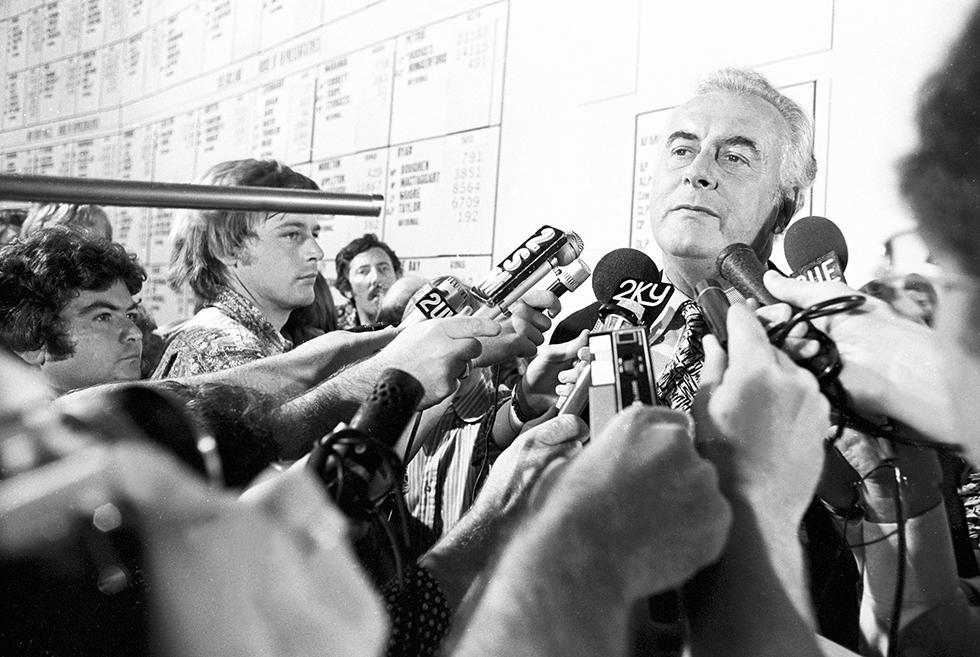
Gough Whitlam conceding election defeat in the National Tally Room, Canberra, 1975. NAA: A6180, 16/12/75/37
At the 1975 double dissolution election, 64 Senate seats were contested. The increase in the size of the Senate was the result of allocating 2 seats each to the Northern Territory and the Australian Capital Territory. In the Senate, 27 Liberal and 27 Labor senators were elected, with 7 National Country Party, 1 Independent and 1 each from the Liberal Movement and the Country Liberal Party.
10 December 1977
Whitlam resigned as party leader and Leader of the Opposition after this election, when the Fraser government maintained its strong majority in the House of Representatives. The Liberal Party won 67 seats to the Labor Party’s 38, with 19 seats going to the National Country Party. This was Whitlam’s last election, as he resigned from his seat in parliament on 31 July 1978. In the Senate the government improved its position slightly, winning 16 seats to Labor’s 14, with the National Country Party and the Country Liberal Party winning 1 seat each. The Australian Democrats entered parliament for the first time, winning 2 Senate seats.
Sources
These brief election results relate only to this prime minister. They are drawn from the online sources below, where further information can be found.
Australian Electoral Commission: Election results
University of Western Australia: Australian Government and Politics Database

